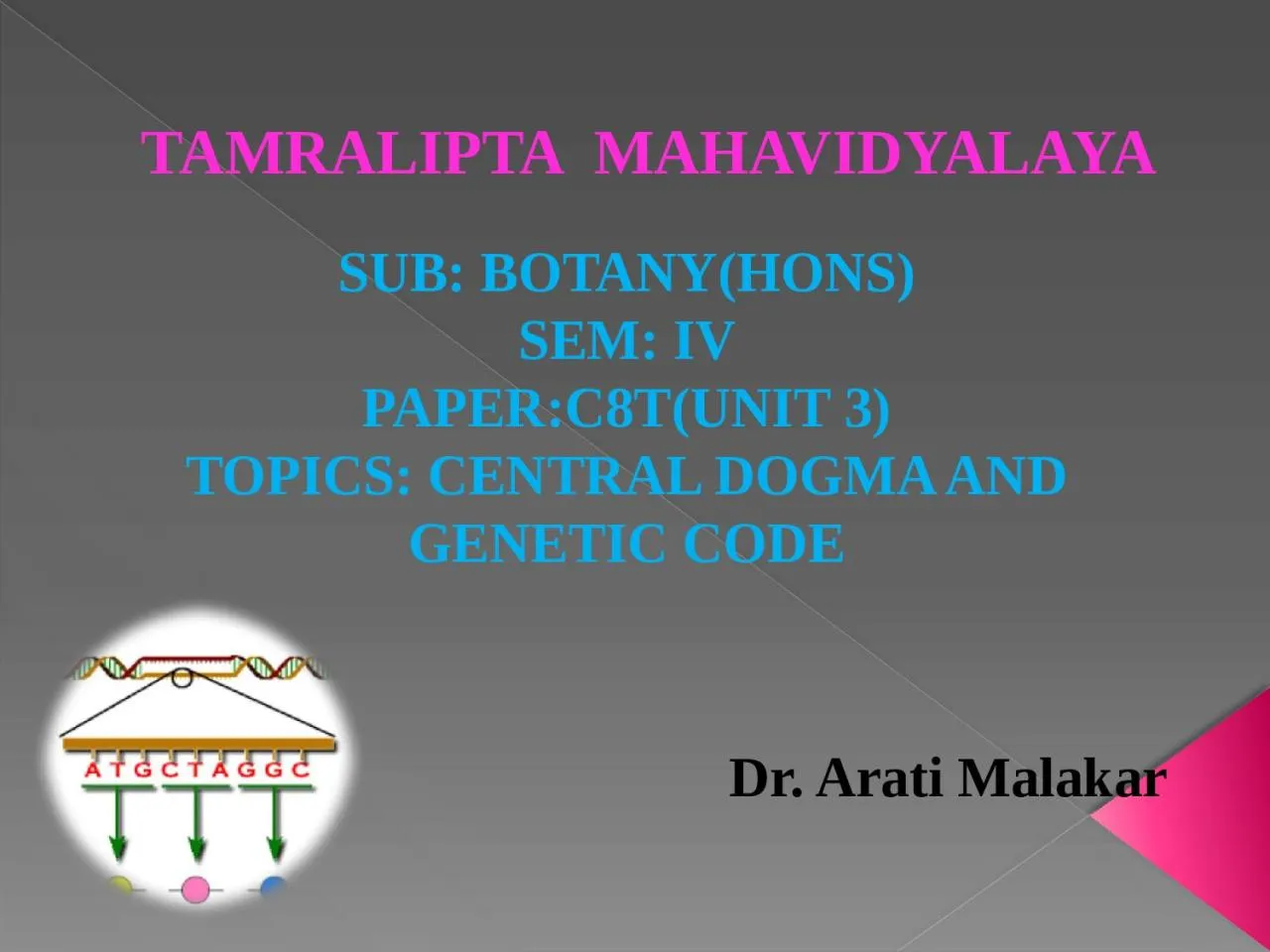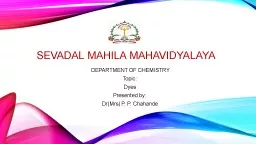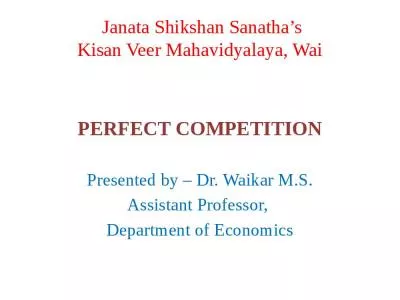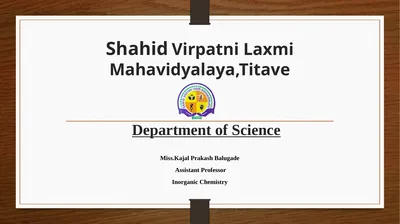PPT-TAMRALIPTA MAHAVIDYALAYA
Author : queenie | Published Date : 2022-06-07
SUB BOTANYHONS SEM IV PAPERC8TUNIT 3 TOPICS CENTRAL DOGMA AND GENETIC CODE Dr Arati Malakar The central dogma of molecular biology describes the twostep process
Presentation Embed Code
Download Presentation
Download Presentation The PPT/PDF document "TAMRALIPTA MAHAVIDYALAYA" is the property of its rightful owner. Permission is granted to download and print the materials on this website for personal, non-commercial use only, and to display it on your personal computer provided you do not modify the materials and that you retain all copyright notices contained in the materials. By downloading content from our website, you accept the terms of this agreement.
TAMRALIPTA MAHAVIDYALAYA: Transcript
Download Rules Of Document
"TAMRALIPTA MAHAVIDYALAYA"The content belongs to its owner. You may download and print it for personal use, without modification, and keep all copyright notices. By downloading, you agree to these terms.
Related Documents






